The 2009 draft was notable at the time for two things: the presence of Stephen Strasburg as the no-doubt consensus No. 1 prospect in the draft and a very deep crop of high school pitching from across the country. It's notable today for something entirely different: It included the new Willie Mays.
This re-draft is based on two major criteria: players' careers to date and my projections of value they still have to offer (though the list does include players whose careers are likely over). I did not account for signability at the time, nor did I consider a team's preference for high school versus college players, pitchers versus position players, etc. In other words, this analysis is based purely on talent. The second overall pick from 2009, UNC infielder Dustin Ackley, did not make the list of the top 30 players from the draft crop; he will lead off my look at the 2009 draft first-round misses. (By the way, you can see my past re-drafts for 2008, 2006, 2005, 2004, 2003 and 2002 as well.)
This ranking includes only players who were drafted and signed in 2009. That means some well-known major leaguers, such as Corey Dickerson, James Paxton, Marcus Stroman and Mitch Haniger, who were drafted that year but didn't sign, aren't eligible for this list. Their day will come.
On to the re-drafted first round of the 2009 draft:
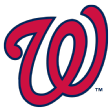 1. Mike Trout, OF
1. Mike Trout, OF
Millville (New Jersey) High School
67.2 career WAR
I suppose this was obvious. Trout is the greatest player of the past 50 years and is still in his prime as a hitter, yet he wasn't a consideration among the first 10 picks, with only a few teams in the top 20 clearly on him. There are many reasons for this, including miserable weather that spring in the northeast, general distrust of cold weather prep hitters and perhaps a bad taste in the industry's collective mouth over 2006's ninth overall pick, Billy Rowell, a high school hitter from southern New Jersey who busted moments after he signed. I saw Trout on a rare sunny, dry day that spring -- a day after I saw Steven Matz throw 30 pitches before a torrential downpour ended the game -- and there were only nine scouts there. I ranked him 20th, higher than he was drafted but about 25 spots too low.
The one skill he showed right away in pro ball that was not evident in high school was his exceptional command of the strike zone, something that carried into the minors and has been a substantial reason for his major league success.
Two more quirky details of this pick: The Angels got the 25th pick from the Yankees, who likely would have taken Trout had they still had that selection, and the scouting director who took Trout, Eddie Bane, was fired by Angels GM Tony Reagins shortly after this extremely productive draft class.
Trout's actual draft spot: First round, No. 25 overall (Angels)
Nationals' actual 2009 pick: Stephen Strasburg, SP, San Diego State
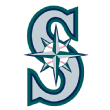 2. Nolan Arenado, 3B
2. Nolan Arenado, 3B
El Toro (California) High School
34.5 career WAR
It's hard to believe if you've seen Arenado only as a big leaguer, but the knock on him in high school was that he had no defensive position. In fact, many teams wanted to take him and convert him to catcher because he was below average at third, and the consensus was that he didn't have the agility to improve enough there. That has proved to be a bit misguided, as he has become an elite defender while producing at an above-average level (118 wRC+, a park-adjusted stat for which 100 is average).
He's third in the class in WAR to date but is younger than everyone else in the top 15 (by WAR) other than Trout, which means he has more time and more prime years to boost his career value.
Arenado's actual draft spot: Second round, No. 59 overall (Rockies)
Mariners' actual 2009 pick: Dustin Ackley, OF, North Carolina
 3. Paul Goldschmidt, 1B
3. Paul Goldschmidt, 1B
Texas State
41.1 career WAR
Goldschmidt was a 49th-rounder out of high school, then played at mid-major Texas State-San Marcos and went in the eighth round, despite strong performances there, because he was seen as a below-average defender at first who didn't have huge offensive upside or the athleticism to improve on defense. Of course, part of why Goldschmidt snuck up on everyone is that he's a better athlete than you'd realize from watching him on a typical day, and he became an above-average defender and even an above-average baserunner through work and conditioning.
I wonder if the same player would be drafted higher today, given the industry's broader data on and understanding of launch angle, as Goldschmidt's swing didn't seem to have great loft for power, but we now know that he has an ideal combination of angle and exit velocity (hard contact) to put balls in the seats.
Goldschmidt's actual draft spot: Eighth round, No. 246 overall (Diamondbacks)
Padres' actual 2009 pick: Donavan Tate, OF, Cartersville (Georgia) High School
 4. Stephen Strasburg, RHP
4. Stephen Strasburg, RHP
San Diego State
29.3 career WAR
The first overall pick in the 2009 draft was seen as a generational talent, emerging on the scene after his freshman year at San Diego State when he pitched for the Torrington Twisters of the NECBL, sat at 97 mph against team USA and went nine up, nine down against that national team's lineup. He was good enough that when Team USA left Connecticut, it brought Strasburg with it.
He has been good, despite losing a year to Tommy John surgery barely two months after his MLB debut. He's closing in on 30 WAR already, he leads all pitchers in the class, and he has made three All-Star teams so far. Yet he's seen now as a disappointment because he didn't live up to the pre-draft hype (to which I certainly contributed). He has had one truly great season, his 2017 that was worth about 6 WAR, and has seen 200 innings only once, in the 2014 season, when he led the NL in strikeouts, the only time he has finished top-five in that category.
The Nationals were never going to pick anyone else at No. 1, nor should they have, given everything we knew at the time, but they didn't end up with the draft's best player.
Strasburg's actual draft spot: First round, No. 1 overall (Nationals)
Pirates' actual 2009 pick: Tony Sanchez, C, Boston College
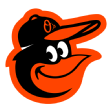 5. Kyle Seager, 3B
5. Kyle Seager, 3B
North Carolina
28.0 career WAR
Seager's emergence as the best player in the Seattle draft class and from that North Carolina team is doubly ironic because the Mariners took his Tar Heels teammate Dustin Ackley with the second overall pick and probably had a better feel for Seager because of all the time they spent scouting Ackley that spring.
Not only was Seager the best of the Tar Heels taken high in 2009 -- Alex White also went in the first round to Cleveland -- but he also has the highest WAR of any UNC player since BJ Surhoff, who was drafted in 1985.
Seager's actual draft spot: Third round, No. 82 overall (Mariners)
Orioles' actual 2009 pick: Matthew Hobgood, RHP, Norco (California) High School
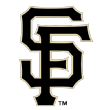 6. Matt Carpenter, 3B
6. Matt Carpenter, 3B
TCU
26.1 career WAR
Carpenter was undrafted out of high school, and out of TCU as a redshirt sophomore, and again as a redshirt junior before the Cardinals took him as a fifth-year senior in the 13th round in 2009, one of the best finds of their analytics department in that time period. He had Tommy John surgery while in college and used his time away from the field to improve his conditioning, dropping weight and becoming a better hitter in the process.
He has to be among the best fifth-year seniors in draft history, yet he isn't the best 13th-rounder among St. Louis' drafts: Albert Pujols was taken in the same round 10 years earlier.
Carpenter's actual draft spot: 13th round, No. 399 overall (Cardinals)
Giants' actual 2009 pick: Zack Wheeler, RHP, East Paulding (Georgia) High School
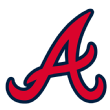 7. Brandon Belt, 1B
7. Brandon Belt, 1B
Texas
23.1 career WAR
Belt was drafted twice as a pitcher, once in 2006 out of high school by the Red Sox and again in 2007 out of San Jacinto Junior College by Atlanta, but he wanted to hit and ended up at the University of Texas, where he showed strong plate discipline and good power in a tough hitter's environment. He nevertheless had some doubters due to his size, closed stance and crouching setup at the plate. Longtime Giants scout Todd Thomas signed him for $200,000, a steal given what Belt has become, enough for Brandon to buy a lot of salad and breadsticks.
Belt's actual draft spot: Fifth round, No. 147 overall (Giants)
Braves' actual 2009 pick: Mike Minor, LHP, Vanderbilt
 8. J.D. Martinez, OF
8. J.D. Martinez, OF
Nova Southeastern (Florida)
21.5 career WAR
Martinez never generated any positive value for the Astros, as they released him after he hit .251/.300/.387 for them in nearly 1,000 PA. But he overhauled his swing, signed with Detroit and has produced more than 22 WAR with a .308/.372/.581 line since. The Division II Nova Southeastern product has settled in as a highly productive DH, still an offensive force at 31, though his profile is not one that tends to age well in the modern era.
Martinez's actual draft spot: 20th round, No. 611 overall (Astros)
Reds' actual 2009 pick: Mike Leake, RHP, Arizona State
 9. Brian Dozier, 2B
9. Brian Dozier, 2B
Southern Miss
23.4 career WAR
Dozier might be finished as anything more than the last man on a bench, but what a peak: In five years as a regular for the Twins, he hit 145 homers with a .333 OBP and averaged nearly 4.5 WAR. He signed as a senior out of Southern Miss after hitting 16 homers for the Golden Eagles ... no, wait, that's his four-year total.
Dozier's actual draft spot: Eighth round, No. 252 overall (Twins)
Tigers' actual 2009 pick: Jacob Turner, RHP, Westminster Christian (Missouri)
 10. Jason Kipnis, 2B
10. Jason Kipnis, 2B
Arizona State
21.2 career WAR
Kipnis had a circuitous route to the draft: redshirting at Kentucky, playing one year before leaving after clashing with the head coach, transferring to Arizona State, where he moved from second base to center field, getting drafted in the fourth round in 2008 by the Padres, choosing not to sign and signing with Cleveland the next year for $575,000. He returned to second base in pro ball and turned in four seasons with 3-plus WAR in the majors before age and injuries dimmed his production.
Kipnis' actual draft spot: Second round, No. 63 overall (Indians)
Nationals' actual 2009 pick: Drew Storen, RHP, Stanford
 11. Patrick Corbin, LHP
11. Patrick Corbin, LHP
Chipola (Florida) Community College
14.2 career WAR
Corbin has the best chance of anyone outside the top 10 to add substantially to his career totals, coming off the best year of his career in 2018 and landing that huge six-year deal with the Nats. He's one of only two junior college draft picks in the 2009 class to generate 5 or more WAR in the majors, along with Trevor Rosenthal. Corbin actually went to two junior colleges in two years, starting at Mohawk Valley in New York before transferring to baseball powerhouse Chipola in Florida.
Corbin's actual draft spot: Second round, No. 80 overall (Angels)
Rockies' actual 2009 pick: Tyler Matzek, LHP, Capistrano Valley (California) High School
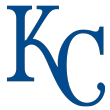 12. Dallas Keuchel, LHP
12. Dallas Keuchel, LHP
Arkansas
18.3 career WAR
I'm assuming Keuchel will continue to pitch in the majors somewhere, eventually, even though he's still unsigned as I write this. Keuchel was a solid starter for Arkansas who showed fringy stuff with good command and a very aggressive approach, but he added a cutter in pro ball and became more of a sinkerballer as well, with ground ball rates consistently over 50 percent once he reached the majors.
Keuchel's actual draft spot: Seventh round, No. 221 overall (Astros)
Royals' actual 2009 pick: Aaron Crow, RHP, Missouri/independent ball
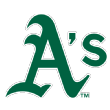 13. A.J. Pollock, OF
13. A.J. Pollock, OF
Notre Dame
19.5 career WAR
Pollock would probably have 25+ WAR by now if he didn't have such an unfortunate history of calamitous injuries. He missed a year in the minors, half of 2014 and just about all of 2016 before a staph infection in his elbow landed him on the 60-day IL this spring. The D-backs had seven picks in the first 64 selections, but only Pollock and Chris Owings (2.7 WAR) have been worth at least a win above replacement in that group.
Pollock's actual draft spot: First round, No. 17 overall (Diamondbacks)
Athletics' actual 2009 pick: Grant Green, SS, USC
 14. DJ LeMahieu, 2B
14. DJ LeMahieu, 2B
LSU
18.7 career WAR
LeMahieu was definitely seen as a reach when the Cubs took him as a draft-eligible sophomore in the second round in 2009. He was a shortstop who couldn't stay there and had swing concerns that showed up in high strikeout totals in his two years with the Tigers. Playing in Colorado helped, of course, but he has become a better contact hitter and an above-average defender at second base.
LeMahieu's actual draft spot: Second round, No. 79 overall (Cubs)
Rangers' actual 2009 pick: Matt Purke, LHP, Klein (Texas) High School
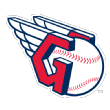 15. Zack Wheeler, RHP
15. Zack Wheeler, RHP
East Paulding (Georgia) High School
7.1 career WAR
The 2009 draft was seen at the time as a great high school pitching draft, but it hasn't panned out that way. Wheeler is second in WAR among prep arms selected in all rounds in 2009, behind Shelby Miller and just ahead of Steven Matz.
Wheeler battled injuries, including a long recovery from Tommy John surgery, but had his best year as a pro by far in 2018 and looks like he's going to hold that form for a few years, enough to make him one of the few players from this draft who still have real upside.
Wheeler's actual draft spot: First round, No. 6 overall (Giants)
Indians' actual 2009 pick: Alex White, RHP, North Carolina
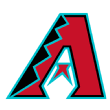 16. Mike Minor, LHP
16. Mike Minor, LHP
Vanderbilt
12.8 career WAR
Minor was seen as the safe pick among college arms in the draft, a known quantity who'd had success for three years at Vanderbilt with a plus changeup and good control, lacking a solid breaking ball or huge velocity. He reached pro ball, saw his velocity spike, had one great year for Atlanta and then blew out, missing almost two and a half years before returning to the majors as a reliever with Kansas City in 2017.
He's now on his second life as a starter, rolling out 205 innings of a 3.76 ERA for Texas since the start of 2018. I'm not sure how much more we can project him to stay healthy, given his history, but I'd take him as a No. 3 starter now on just about any team.
Minor's actual draft spot: First round, No. 7 overall (Braves)
Diamondbacks' actual 2009 pick: Bobby Borchering, 3B, Bishop Verot (Florida) High School
 17. Mike Leake, RHP
17. Mike Leake, RHP
Arizona State
16.0 career WAR
Leake was a favorite of mine from the draft class because he was successful yet atypical, throwing five or six different pitches, depending how you classified them, rarely getting much above 91-92 mph, sinking the heck out of his two-seamer and fielding his position like the next Mark Buehrle.
He has been more of a steady back-end starter in the majors and still produces a little value each year in decidedly unsexy fashion, but his fastball velocity has declined 3 mph in two years, making him so homer-prone so far in 2019 that he might end up losing his rotation spot and finding himself in a long relief role or out of the majors.
Leake's actual draft spot: First round, No. 8 overall (Reds)
Diamondbacks' actual 2009 pick: A.J. Pollock, OF, Notre Dame
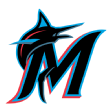 18. Khris Davis, OF
18. Khris Davis, OF
Cal State Fullerton
13.0 career WAR
Davis didn't perform well in his first two years at Cal State Fullerton but exploded as a junior with 16 homers, pushing the Brewers to take him in the seventh round. Davis' father, Rodney, is a longtime scout who worked for the Dodgers, Diamondbacks and the MLB Scouting Bureau.
Davis' actual draft spot: Seventh round, No. 226 overall (Brewers)
Marlins' actual 2009 pick: Chad James, LHP, Yukon (Oklahoma) High School
 19. Yan Gomes, C
19. Yan Gomes, C
Barry University
11.9 career WAR
Gomes didn't sign with the Red Sox as a 39th-round pick in 2008, while he was at the University of Tennessee. He transferred to Division II Barry University after his sophomore year and signed with the Blue Jays, who traded him to Cleveland three years later for Esmil Rogers.
He's the only Brazilian-born player to reach the majors via the draft. There have been four other Brazilians who played in MLB, but all four signed as international free agents.
Gomes' actual draft spot: 10th round, No. 310 overall (Blue Jays)
Cardinals' actual 2009 pick: Shelby Miller, RHP, Brownwood (Texas) High School
 20. Wil Myers, 1B/OF
20. Wil Myers, 1B/OF
Wesleyan Christian Academy (North Carolina)
10.5 career WAR
Myers has never quite fulfilled the promise he had as a prospect -- he has been more valuable as a trade piece (twice!) than he has ever been as a major league player -- but he was seen as a first-round talent who would be difficult to sign prior to the 2009 draft.
The Royals spent freely and aggressively in the draft in the last years before MLB decided amateur players were making too much money and started penalizing teams for paying players who were good. Myers was one of their biggest draft successes since his trade to Tampa Bay brought back James Shields and Wade Davis. He was a catcher as an amateur, but the Royals moved him immediately to third base, believing his bat was so far ahead of his defense that he needed to go to another position.
Myers' actual draft spot: Third round, No. 91 overall (Royals)
Blue Jays' actual 2009 pick: Chad Jenkins, RHP, Kennesaw State
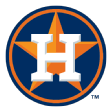 21. Randal Grichuk, OF
21. Randal Grichuk, OF
Lamar Cons. (Texas) High School
10.0 career WAR
Grichuk is a trivia answer -- who was the Angels' first pick in the draft in which they took Mike Trout -- but he has turned into a solid extra outfielder in his own right, despite a career .299 OBP.
I saw Grichuk in the spring of 2009 in a matchup against fellow first-rounder Matt Purke. Purke owned Grichuk three times, after which Grichuk hit a very loud home run off a reliever.
Grichuk's actual draft spot: First round, No. 24 overall (Angels)
Astros' actual 2009 pick: Jiovanni Miller, SS, Bonita (California) High School
 22. Jake Marisnick, OF
22. Jake Marisnick, OF
Riverside Poly (California) High School
10.1 career WAR
I think Marisnick could have started for a few teams the past couple of years as a plus defensive center fielder with speed and a little pop, but he has been productive in an extra outfielder role for the Astros. Houston is his third organization after the Jays traded him to the Marlins in the Jose Reyes swap, and then he went to the Astros with Colin Moran and Francis Martes in exchange for Jarred Cosart and Kike Hernandez.
Marisnick's actual draft spot: Third round, No. 104 overall (Blue Jays)
Twins' actual 2009 pick: Kyle Gibson, RHP, Missouri
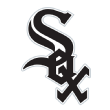 23. Scooter Gennett, 2B
23. Scooter Gennett, 2B
Sarasota (Florida) High School
11.5 career WAR
I thought Gennett was a classic "college guy," a high school player who needs to go to college for his own development so we can see if he'll develop enough to have a pro future, but the Brewers went over slot to sign him in the 16th round, giving him $260,000 to skip his commitment to Florida State.
He has turned in a fine career as a platoon second baseman -- more than 80 percent of his PA have come against RHP, and he has a career .240/.284/.354 line against southpaws -- and became the least likely player to hit four homers in a game.
Gennett's actual draft spot: 16th round, No. 496 overall (Brewers)
White Sox's actual 2009 pick: Jared Mitchell, OF, LSU
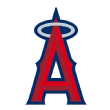 24. Kike Hernandez, OF/2B
24. Kike Hernandez, OF/2B
American Military Academy (Puerto Rico)
8.2 career WAR
Speaking of Hernandez, the diminutive infielder was an unheralded sixth-rounder signed out of high school in Puerto Rico, but when the Astros traded him to the Marlins, I had sources in Houston tell me they were more upset to lose him than to lose the much more highly touted Cosart, who ended up with off-field issues and trouble staying healthy.
Hernandez's actual draft spot: Sixth round, No. 191 overall (Astros)
Angels' actual 2009 pick: Randal Grichuk, OF, Lamar Consolated (Texas) High School
 25. Kyle Gibson, Minnesota, RHP
25. Kyle Gibson, Minnesota, RHP
Missouri
9.3 career WAR
Gibson looked like a classic case of a college guy who did what we want college guys to do: He got bigger, threw a little harder (but still seemed to have projection left) and had success in college to give both scouts and analysts more information to justify the high pick.
He has had a couple of great years in the Twins' rotation, including a career-best 2018, and some years in which he gave up too much contact, I think in part because his fastball has never played up to its velocity.
Gibson's actual draft spot: First round, No. 22 overall (Twins)
Angels' actual 2009 pick: Mike Trout, OF, Millville (New Jersey) High School
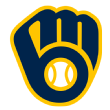 26. Garrett Richards, RHP
26. Garrett Richards, RHP
Oklahoma
7.3 career WAR
Richards has top-of-the-rotation stuff when healthy, but he's out until 2020 after a long-delayed Tommy John surgery. He threw hard as an amateur for the University of Oklahoma but had trouble with command and control, still walking a man every other inning in his junior year, the only year he worked as a starter.
Richards' actual draft spot: First round (supplemental), No. 42 overall (Angels)
Brewers' actual 2009 pick: Eric Arnett, RHP, Indiana
 27. Shelby Miller, RHP
27. Shelby Miller, RHP
Brownwood (Texas) High School
8.1 career WAR
Miller was my favorite among the mess of high school right-handers in this draft class, and he had a brief peak before the trade to Arizona -- for Dansby Swanson, Ender Inciarte and Aaron Blair -- for which he'll be best remembered, barring a big second act. He's with Texas now, but his command hasn't returned yet since having Tommy John surgery.
Miller's actual draft spot: First round, No. 19 overall (Cardinals)
Mariners' actual 2009 pick: Nick Franklin, SS, Lake Brantley (Florida) High School
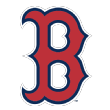 28. Steven Matz, LHP
28. Steven Matz, LHP
Ward Melville (New York) High School
5.6 career WAR
The Mets didn't have a first-round pick that year, having lost theirs to the Angels for Francisco Rodriguez. (That was technically the pick the Angels used for Grichuk, and they used the one from the Yankees for Trout, but yes, the Mets could have had a shot at taking Trout.) They chose a local kid, Long Island native Matz, who had a violent delivery but showed arm strength and a promising curveball. He blew out his elbow almost immediately and didn't pitch for two and a half years between that and other injuries, but he has shown above-average performance across limited workloads since his return to regular pitching.
Matz's actual draft spot: Second round, No. 72 overall (Mets)
Red Sox's actual 2009 pick: Reymond Fuentes, OF, Fernando Callejo (Puerto Rico) High School
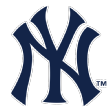 29. Mike Fiers, RHP
29. Mike Fiers, RHP
Nova Southeastern (Florida)
8.3 career WAR
Fiers might have been the oldest player drafted in 2009. He turned 24 one week after the draft took place, having taken six years to get to that point after he finished high school, with stops at Broward County Community College and Cumberland University along the way. He was a particular favorite of the Brewers' late scouting director Bruce Seid, who thought Fiers was unduly disregarded as a prospect for his age. (He was right, by the way.)
Fiers' actual draft spot: 22nd round, No. 676 overall (Brewers)
Yankees' actual 2009 pick: Slade Heathcott, Texas (Texas) High School
 30. Billy Hamilton, OF
30. Billy Hamilton, OF
Taylorsville (Mississippi) High School
8.6 career WAR
I've used Baseball-Reference's WAR figures across this list, but it's worth noting that Hamilton, the fastest player I've ever scouted in person, scores higher on FanGraphs' version (9.8), getting a boost from 55 runs created as a baserunner along with 45 runs saved on defense, nearly all of which he has given back with his bat.
Hamilton's actual draft spot: Second round, No. 57 overall (Reds)
Rays' actual 2009 pick: LeVon Washington, 2B, Buchholz (Florida) High School
